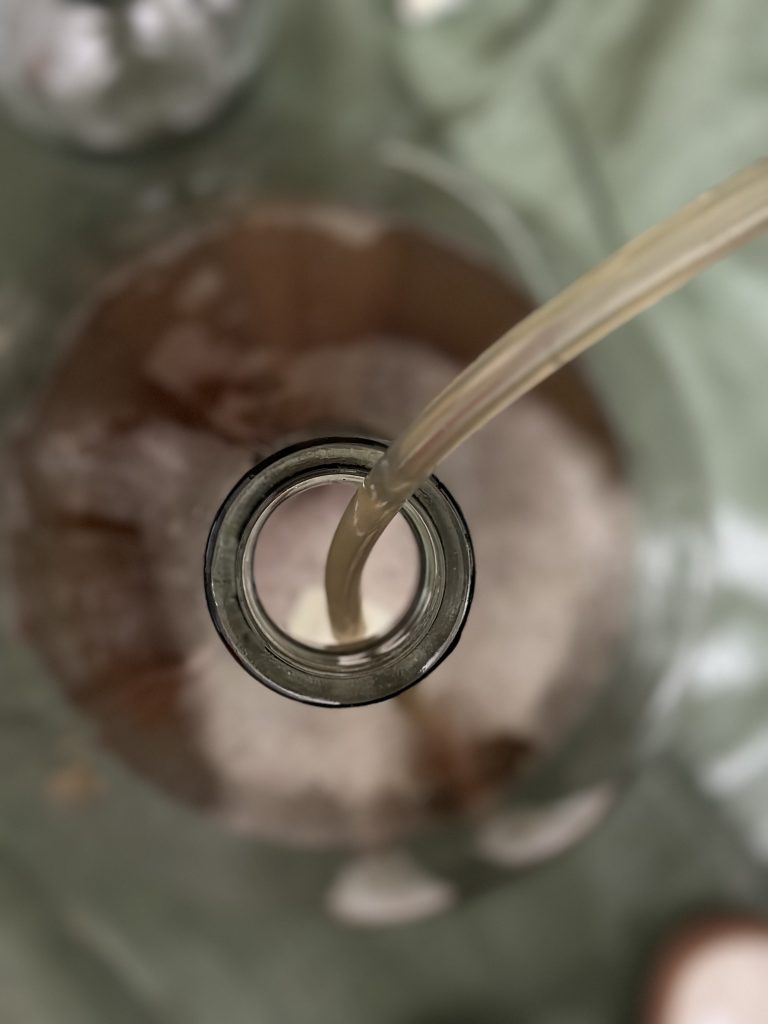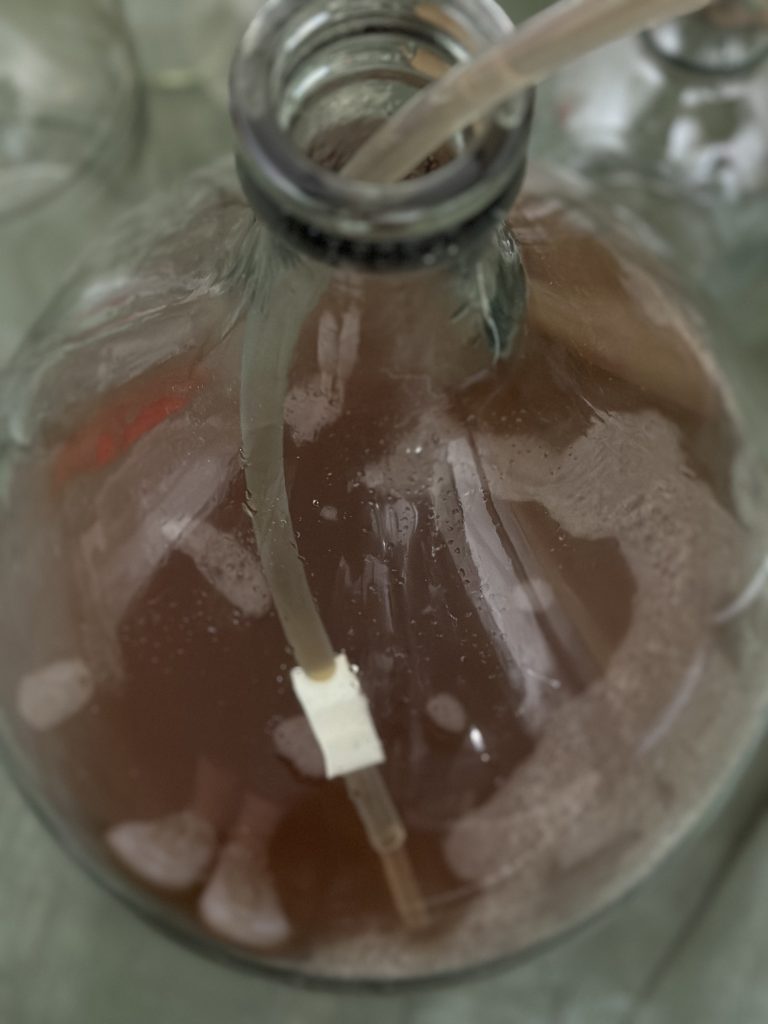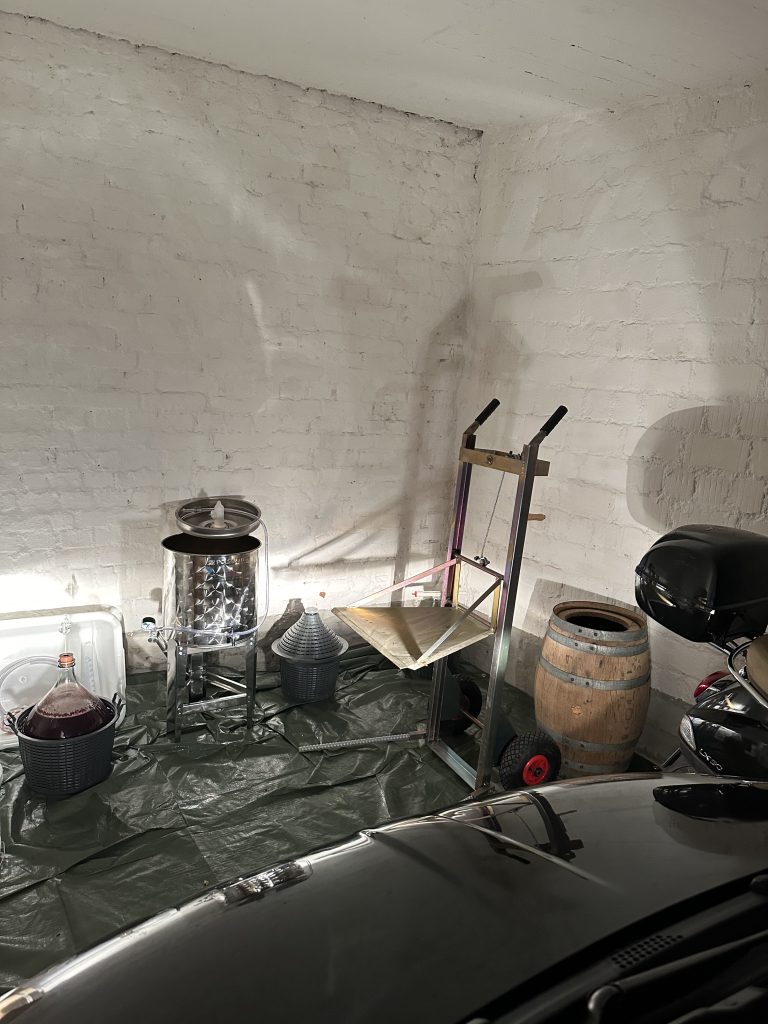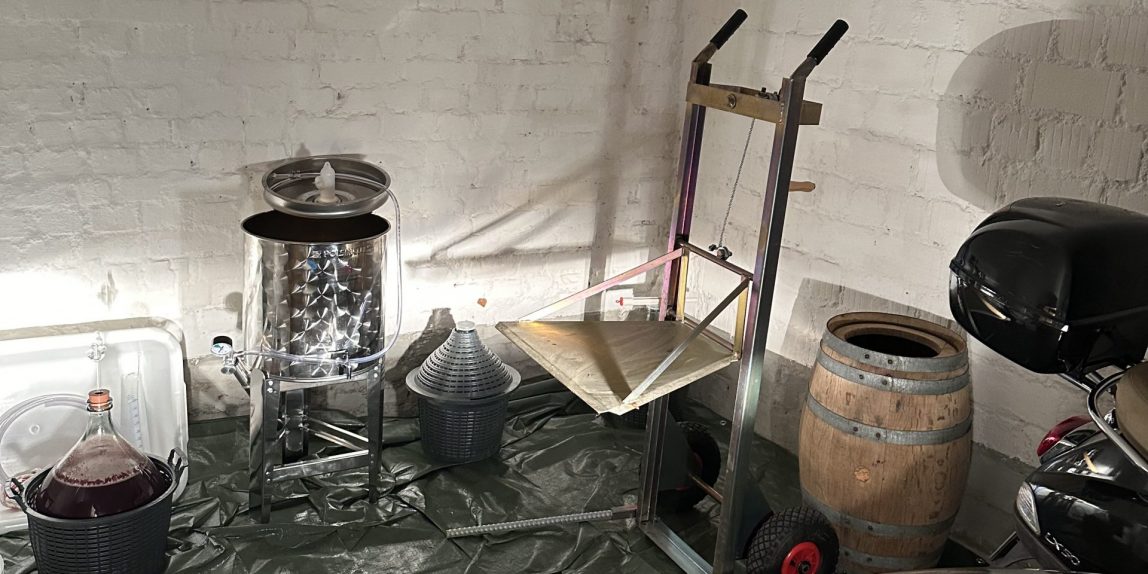This is a story about my own experiment of making a mini batch of wine, all natural, in the capital of beer, in a garage with no water nor power
Various people have asked me: where do you have your grapes from? Did you get them shipped? Did you get the must pressed at a winery and shipped to you? They know that growing vines in the city center is no option and I would not be able to farm in parallel to a demanding fulltime job in communications. So, valid questions.
For my wine, actually, everything is handmade. In a garage that I am using as a shared space for the winery, my Vespa scooter and my Cinquecento.
I had help when we spontaneously harvested 4 buckets of Vernatsch from the beautiful vineyard of Unterplatten, that is owned by Marion and Martin Gojer of Pranzegg.
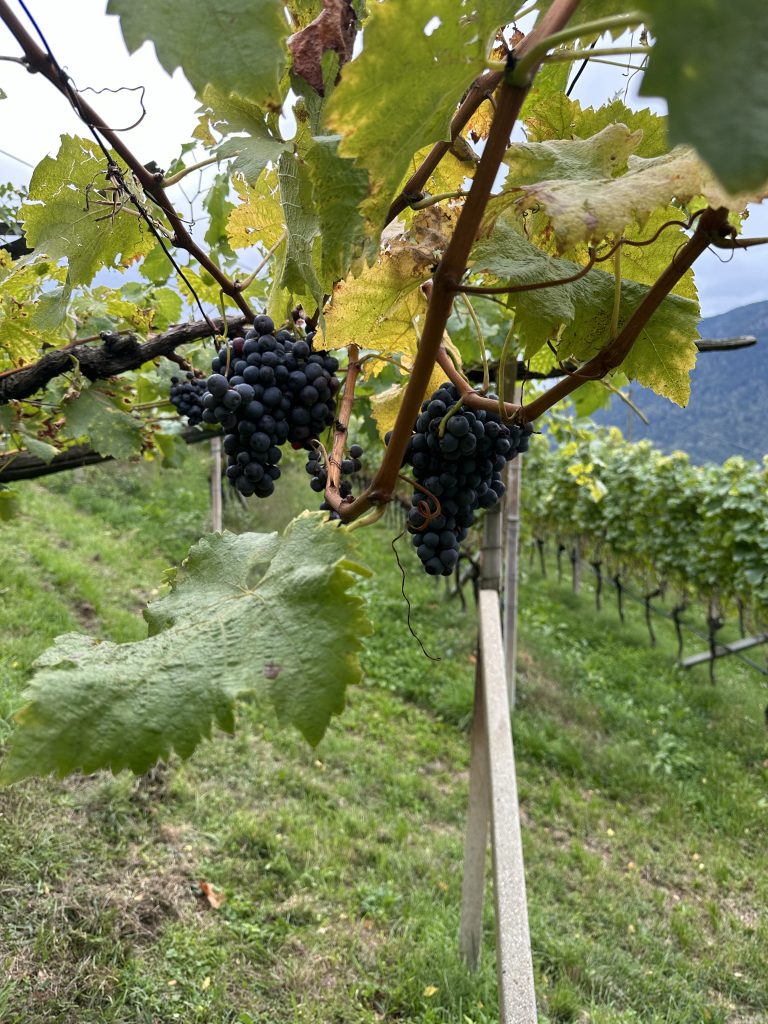
Unterplatten is a beautiful vineyard with grapes growing on traditional pergole and the couple was generous and excited to help me out with some fruit in the middle of harvest season.
The vineyard is about 750m above sea level, has stunning views and quite a lot of sun during the day as its south-east facing. The Schiava (aka Vernatsch, a typical variety in Alto Adige, in Northern Italy) was ripe and beautiful when I arrived-and Martin, Marion and their mini harvest crew helped me fill up my buckets in super speed on October 1st.
I took the buckets filled with grapes back to Munich in the trunk of my Cinquecento. It has proven to be the best car I could ever think of, taking me across Europe and even taking grapes home. A quick stint to the office on the way, and then I took my harvested goods to the garage that I am renting in the center of Schwabing – an old neighborhood in Munich, known for its artist history and now its hip crowd.
A short sidestep: Munich is a beer brewing city. There are 6 established breweries and all of them are world-famous. Unpretentious and recently founded Giesinger Bräu has recently been added and just made its way to be even cooler. It started in 2005, and by now is not a microbrewery anymore.
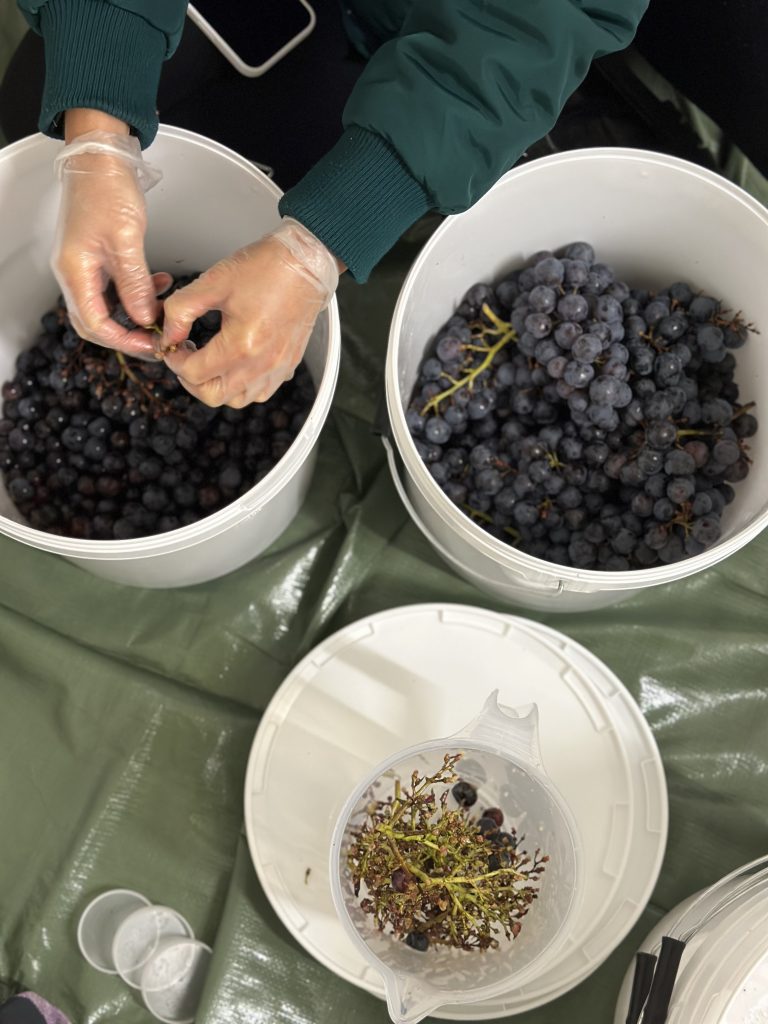
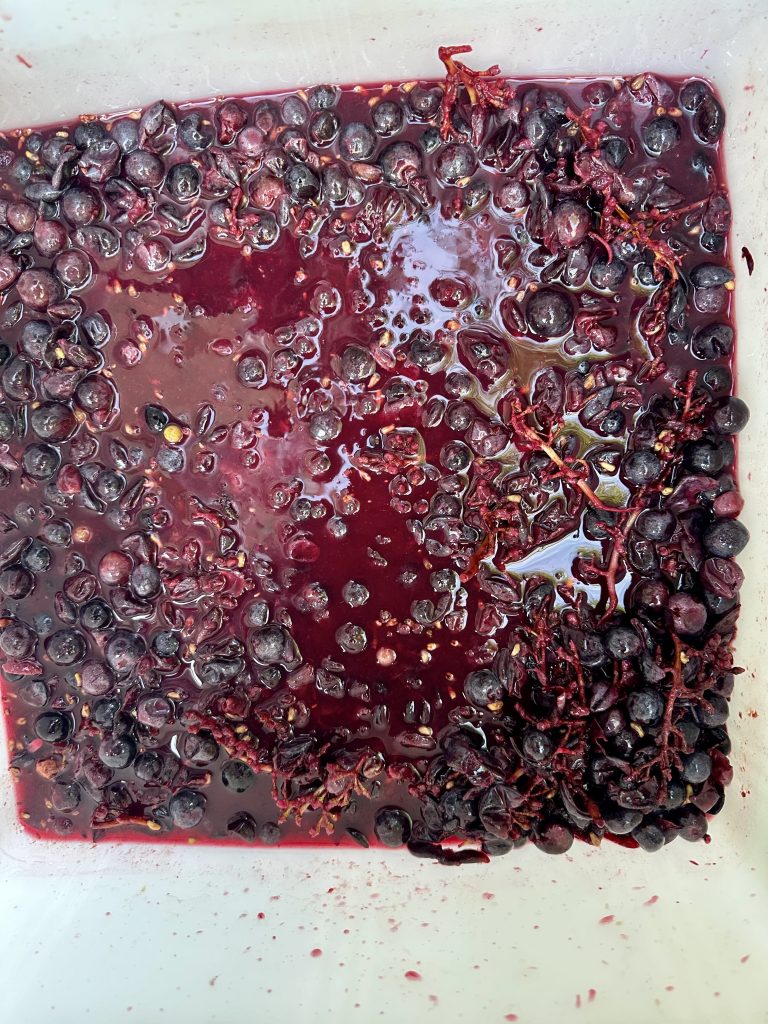
I stomped my Vernatsch grapes and kept one bucket aside. My friend destemmed the berries of this one bucket by hand and we threw them in the plastic tub to ferment everything-covered with plastic foil, in the garage at 14‘C. We were done close to midnight.
A couple of days later, I went to Escherndorf in Franconia three hours north of Munich and was offered to pick the most beautiful pinot blanc I could think of. The vineyard, Fürstenberg, is steep, east facing and overlooking the Main valley. My friend Horst Sauer is a famous, and super knowledgeable winemaker. He does not believe in natural wine. Not at all. He was open to help me anyway.
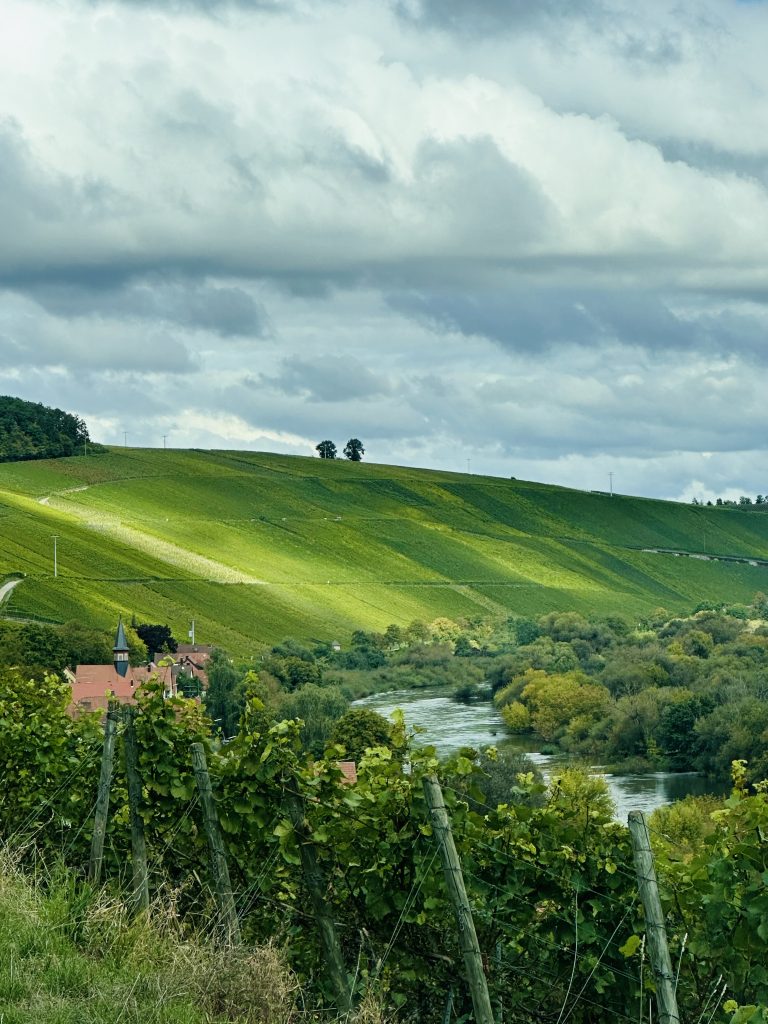
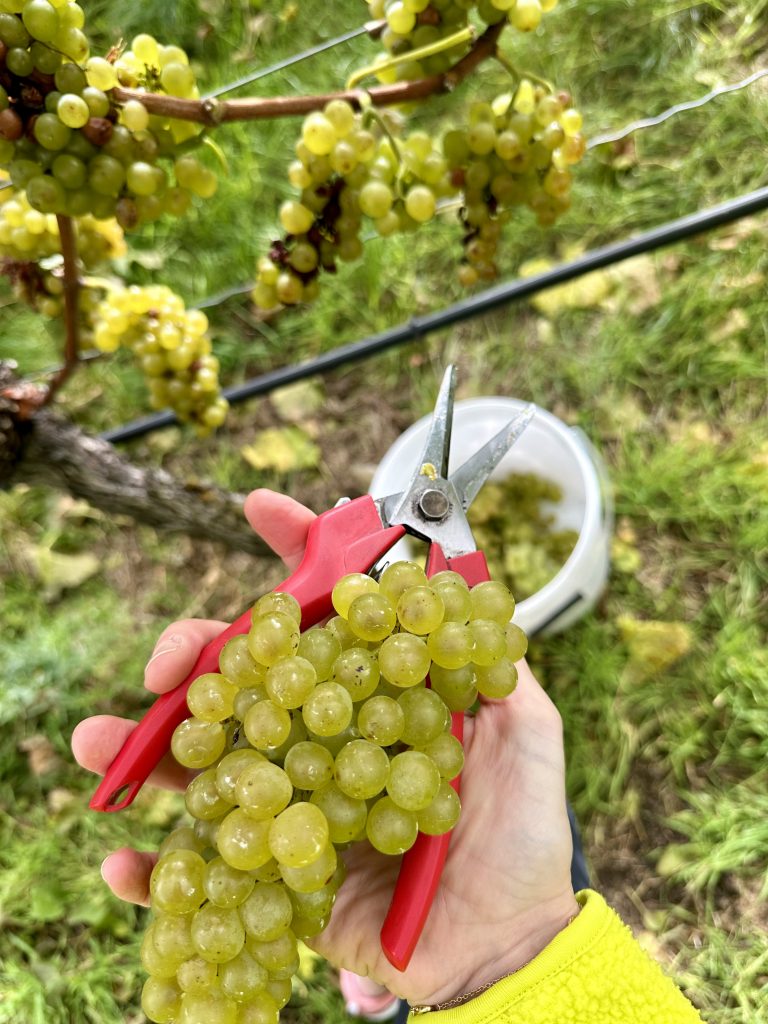
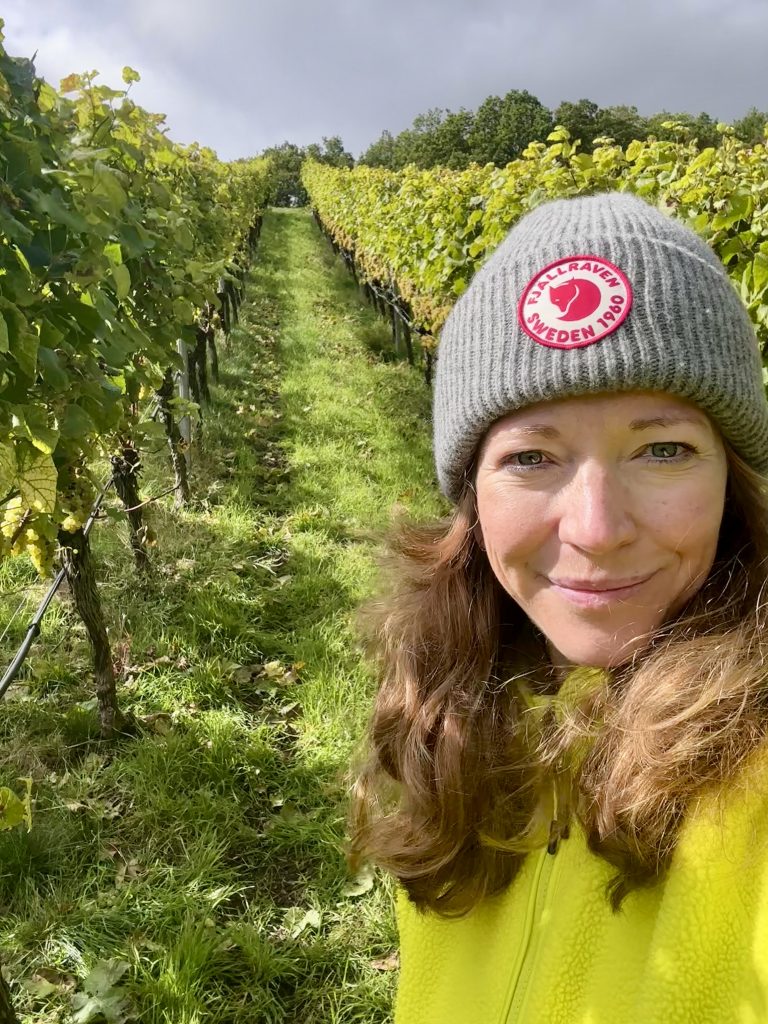
He left me in the vineyard and gave me time to pick what I thought would be the best fruit. I filled my 5 buckets to the top. When I got back to the winery with the old Volkswagen transporter he let me use, I closed the lids tightly after we put some dry ice on the grapes.
I couldn’t be more thankful for the amazing support that I received from dear friends and people who believe in my experiment or just love to be courageous and want to join me try to make wine in the center of a beer capital.
After tasting some wild wines, talks about conventional and low-intervention winemaking and their business models, having wurst and some snacks with the Sauers, I drove home with my pinot blanc in the 5 buckets and a box of dry ice in the Cinquecento. I got to the garage at midnight. Then stomped the grapes in my second tub. Put plastic foil on. Went around the corner to my apartment and took the dirty buckets with me, and one that I had not stomped. I squeezed those grapes at home with a small steel pan, left them in the plastic bucket and closed the lid tight. There it was, my pied de cuve. I then fell into bed.
Days later I was truly concerned as NOTHING was going on with the pinot, no bubbles, no temperature, no musty aromas, simply nothing. I put the well fermenting and by then stinky pied de cuve in. I was so afraid I would mess everything up. It was getting cold and the temperatures dropped below 10 degrees outside. And the garage is not insulated of course.
Days later, some browning occurred, and it got quite stinky, of sulfur and of acidic must. I gave up on it.
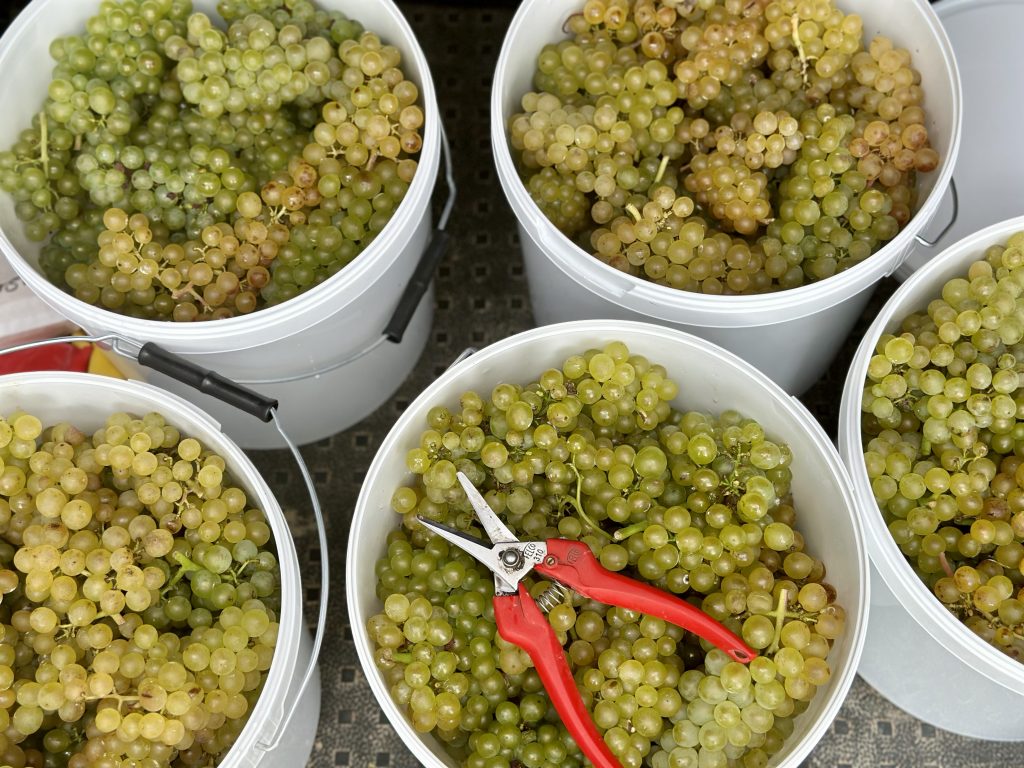
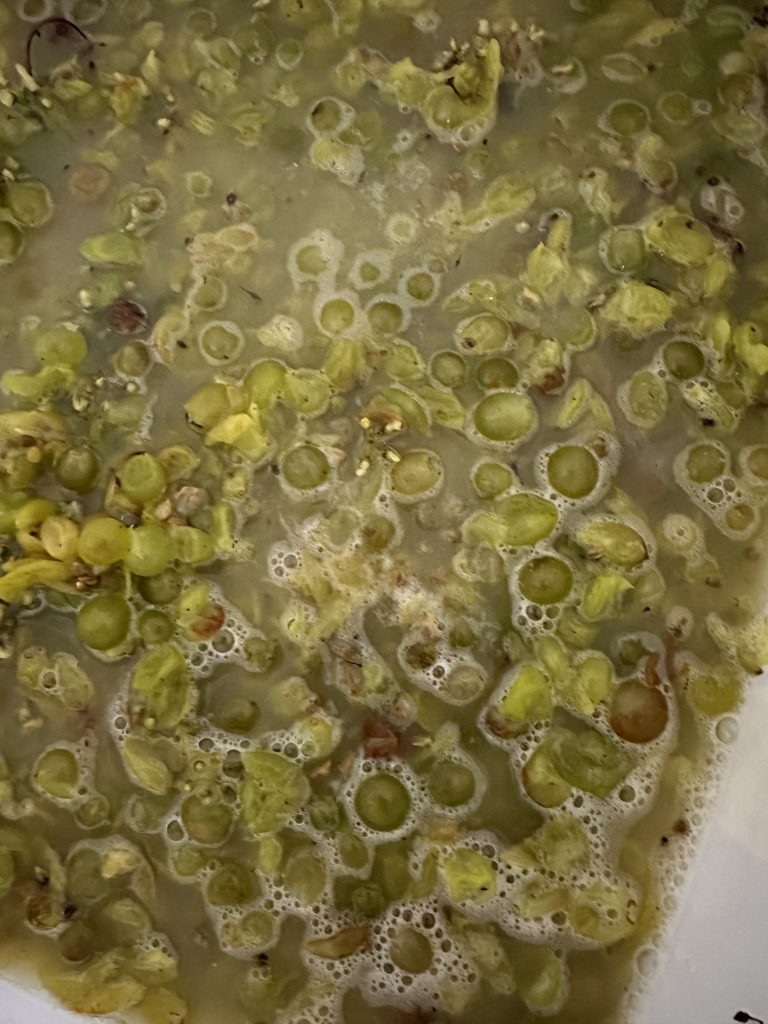
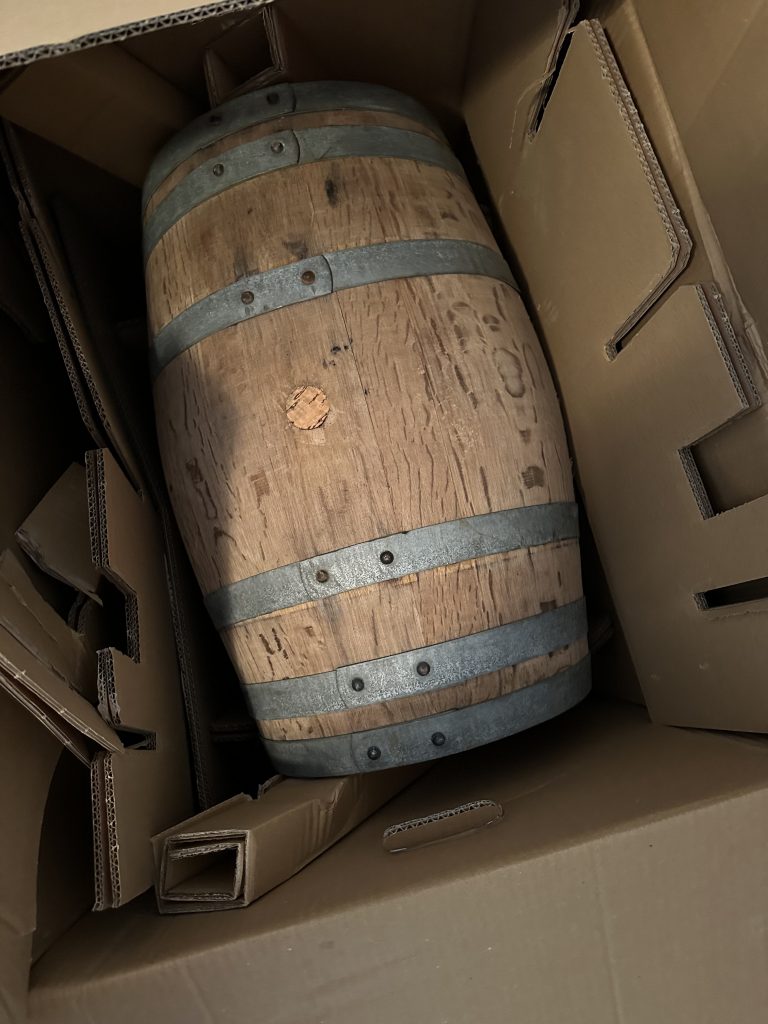
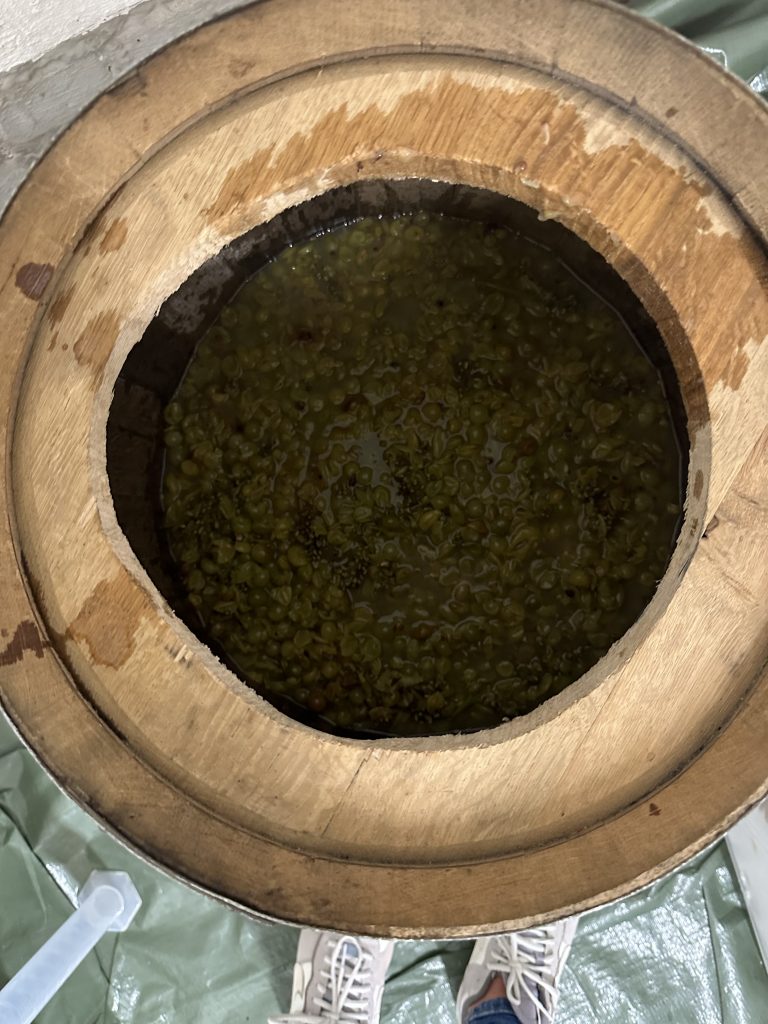
Horst insisted to send me an old 50l barrel that he prepared for me-it would suit my style of winemaking, he said. It came with a UPS guy who brought it to my apartment, second floor, nicely packed in a paper box.
Unpacked, cleaned and drained to let it swell, that barrel became my fermentation vessel with a plastic cover on. I did punch downs every day, and fermentation went on nicely.
Another two weeks later, I decided to save it from oxygen, to press it in the backyard of my apartment with my neighbors helping me out and being fascinated of the crazy process, and to put the must into a tank with a floating lid that makes it full at all times.
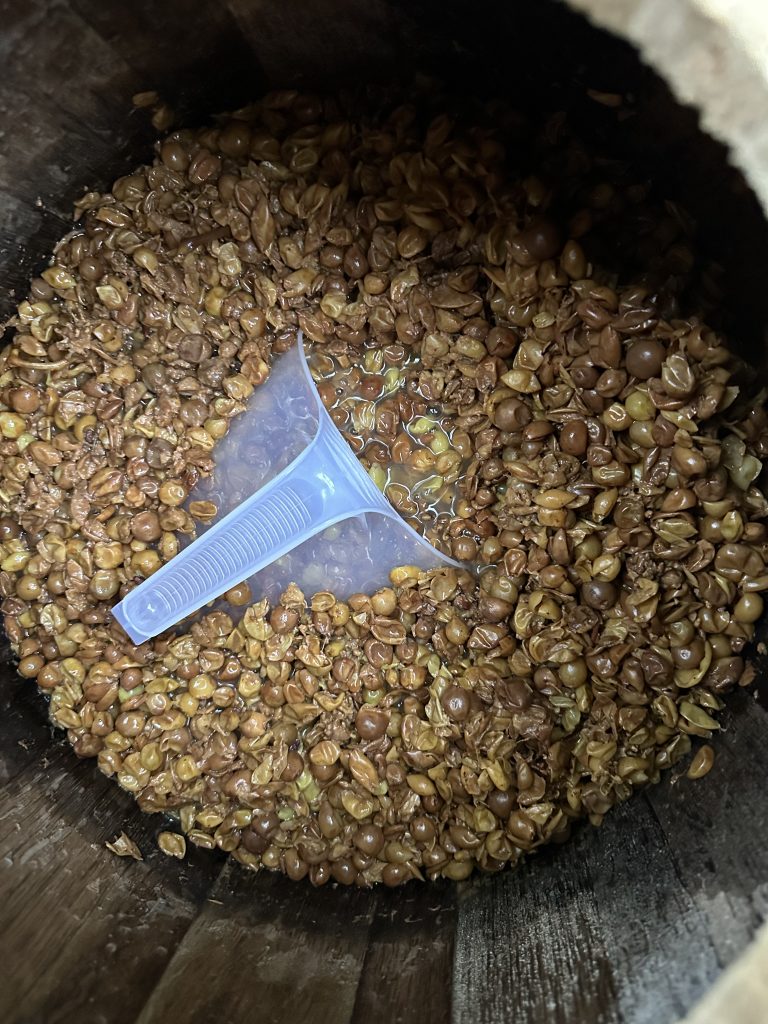
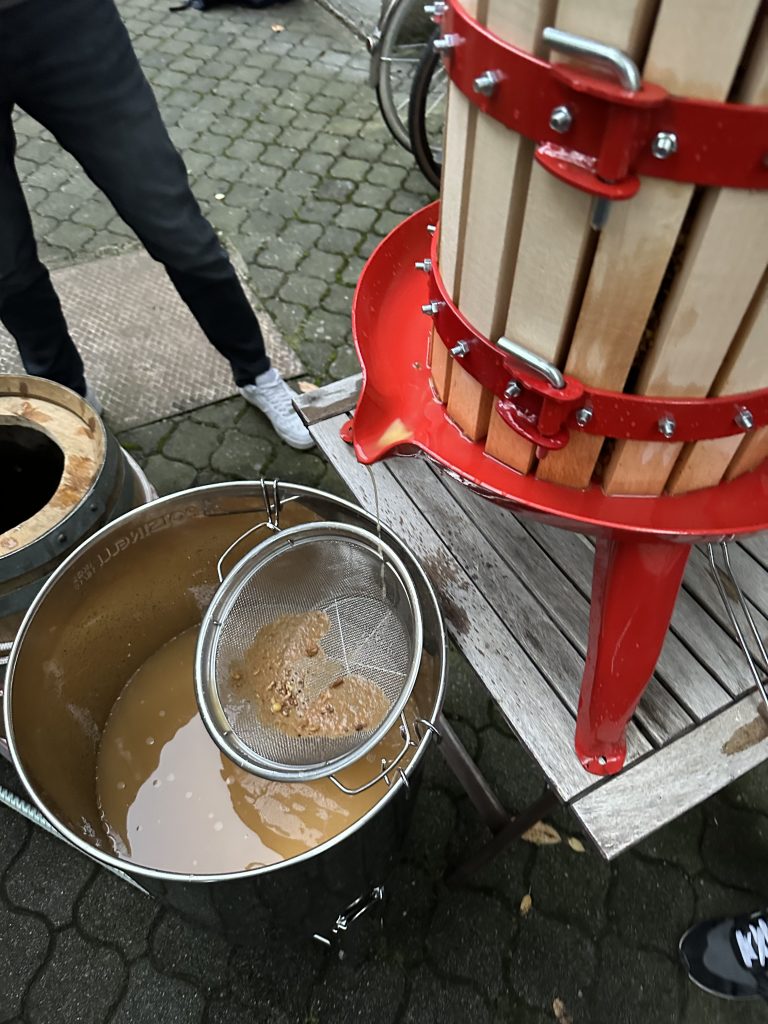
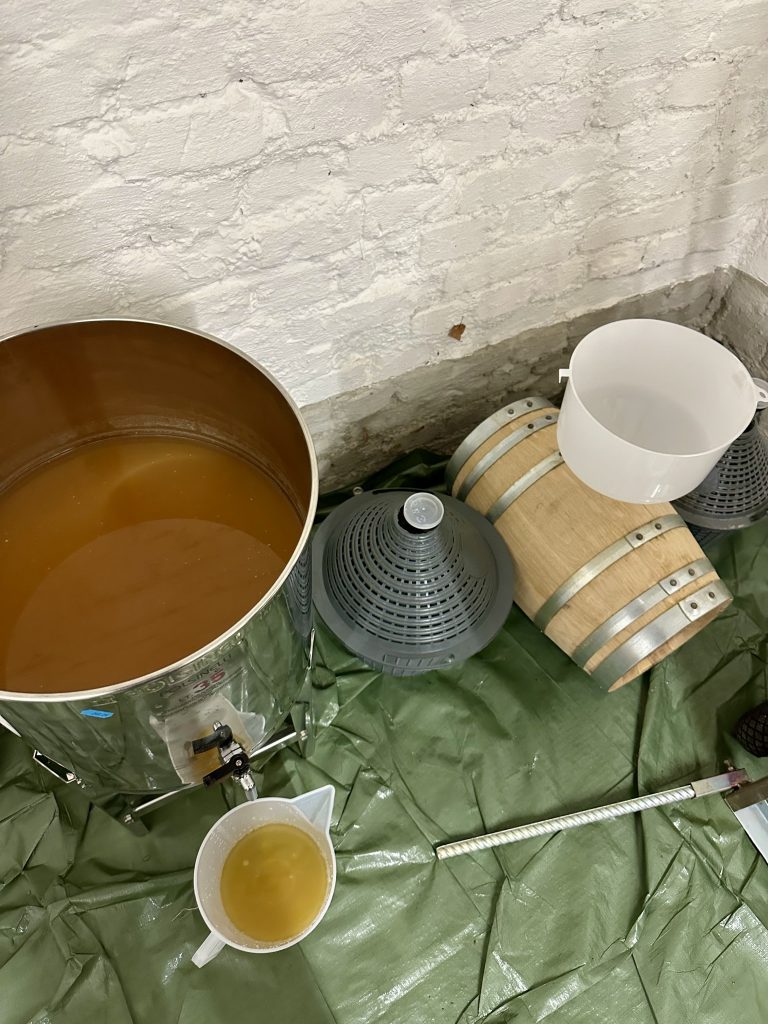
On day 24, the must was at 998g/l density.
Horst’s voice was in my head. It would be great to have the pinot in wood, he said. Smoothens its aromas, gives it interesting profile. My 20l oak barrel finally arrived from an italian winemaking equipment company! I racked the wine from tank to barrel. It was almost enough to fill it, but 1-2 liters missing! The things about barrels is that you have to keep them full. Otherwise oxygen will do its job. It invites bacteria or yeast to join and fill the space with some stinky metabolites. The tiny 20 liters barrel wasn’t full! I was crashed.
Nervous nights later I woke up and thought of adding something to fill up the space. Something that could handle the alcohol, acidity, ph of my wine. I found people who sold their kids’ glass balls to me for very little money and one of them actually makes plum wine on their balcony and honey on the roof. I felt like in a farming community in the middle of the city.
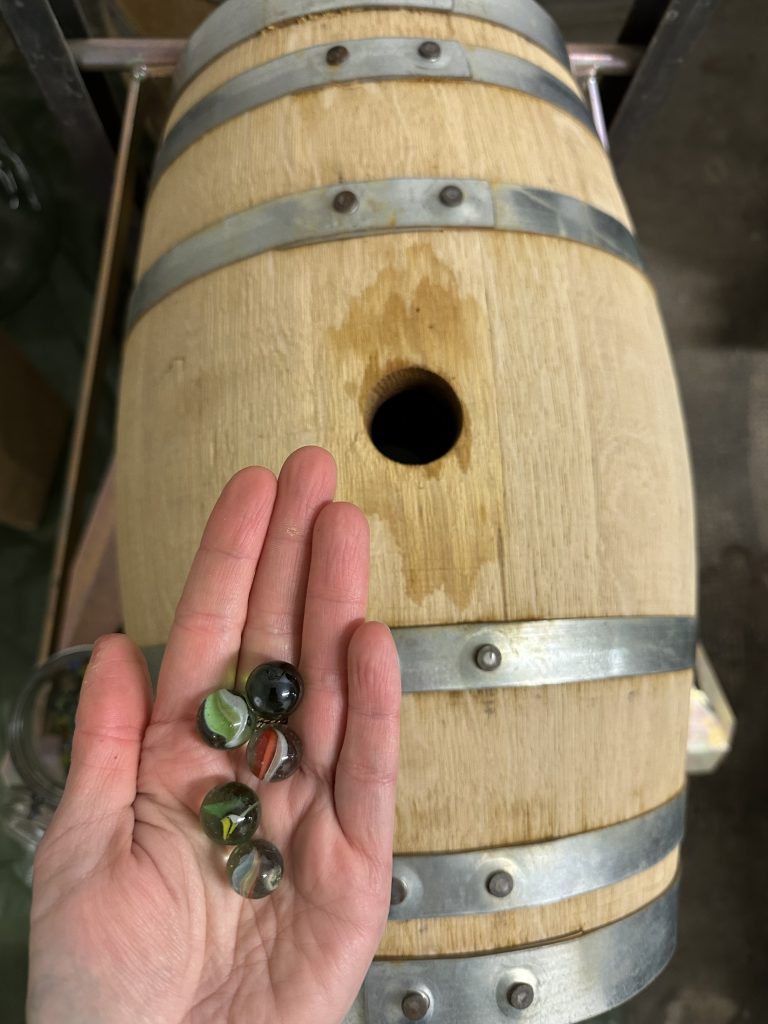
The glass balls did not completely fill the barrel, there was still space. I decided to ignore it for the moment. It can’t be this hard to make tasty wine in a garage with no water nor electricity, and tiny batches!
The Vernatsch went off well until 30 days after picking. The fermentation was extremely slow, and the garage was cold, 7 degrees Celsius or so. On day 39 at 1004g/l density I racked it off the lees, to my floating cap tank. I was getting really nervous. The tank didn’t give me any signal of fermentation. I told some befriended winemakers about it and they had all kinds of tips: take it inside where it’s warm. Heat it up with an aquarium heater. Don’t leave the bung on it that comes with the tank!
I was really unsure what to do, and I knew with everything they said they were right. But you also shouldn’t get driven by insecurity, nor impatience when attempting to make wine. So I put a fermentation bung on it, instead of the standard one that apparently doesn’t properly close. Put a blanket around it to keep it a bit warm, and a paper box on top to keep the temperature. And I waited, and then tasted. It was still a bit fizzy, slight sugars, beautiful fruit, sweet cherry and candied berries. I could have perfectly served it for Beaujoulais Nouveau day, but I didn’t want it -almost- done, with a bit of sugar left to ferment, and a tiny fizz. It was supposed to be just right, so I waited.
4 weeks later I tasted it in the garage again, needed to warm it with my hands to truly experience the aromas, it had been cold and the thermometer showed 2 degrees. There was the candied fruit and cherry aromas. Still a tiny bit sweet? A hint of ethylacetate. Tiny one. It’s the aroma that reminds you of plastic. I decided to take a bottle off the tank and measure the sugar again. And to present it to my friends to see what they say.
That evening turned out to be a true tasting party, although none of them is an expert. They were surprised about its beautiful light red color and the candied aromas. They mentioned cherry juice – and car tires, glue and plastic. They nailed it. I had failed.
The wine was taken over by acetobacter aceti, my uninvited guest that loves to crash any wine cellar party of yeast getting tired. It probably loved the residual sugar and decided to produce some acetic acid and the unwanted glue and plastic aromas.
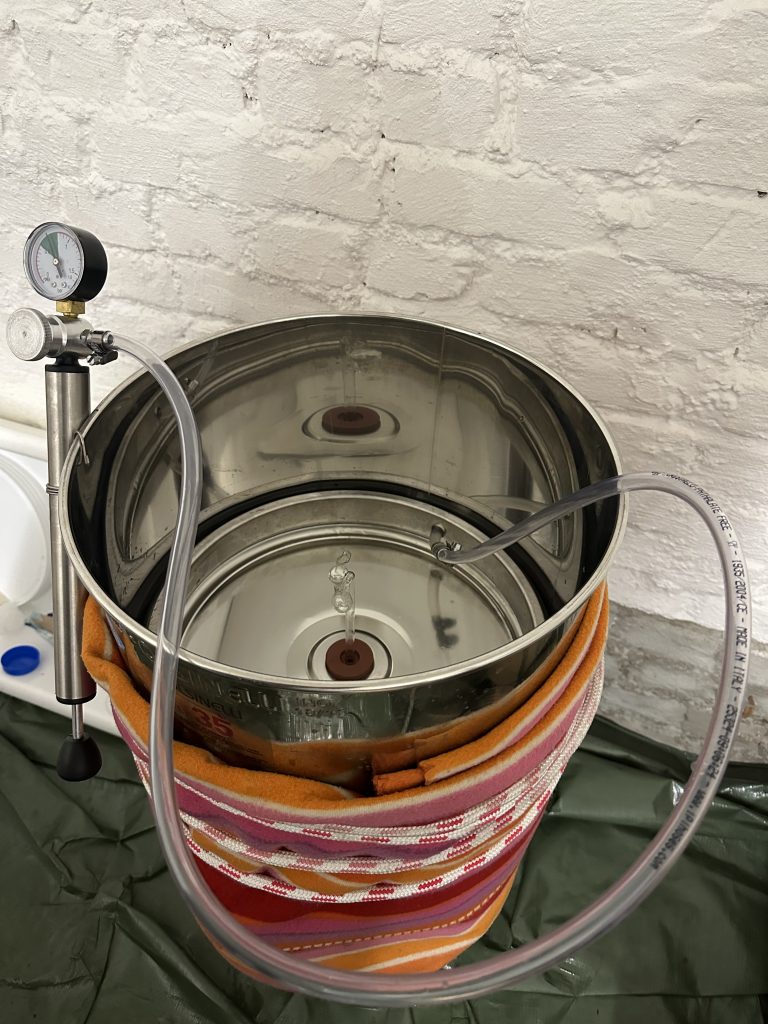
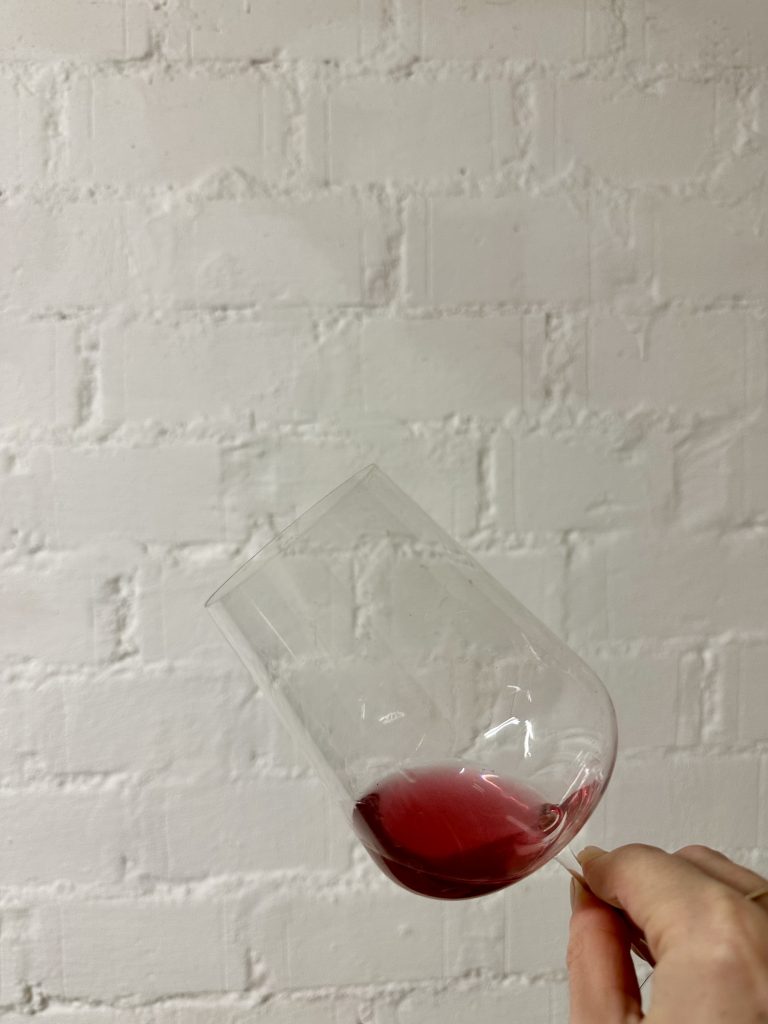
I was devastated.
When we made mulled wine out of it, it was delicious.
You might ask yourself: so what about the white? Isn’t there a barrel with glass balls and almost 20 liters of pinot blanc somewhere?
Winemaking isn’t about getting impatient.
The white was racked off the mini barrel at the end of January. It looked clear in the hose when I pumped it out. But like muddy rain water when I had it in the demijohn. It made exact 15+3 liters. The leftover lees were beautiful. Aromas of a delicate, light acidity wine, elegant and an interesting hint of crispiness. The taste was amazing. The looks disgusting.
I am giving it time – I am still renting the garage until end of April and will let the wine sit and develop. Once more, winemaking and impatience don’t go well together. Let’s see where it takes me next.
